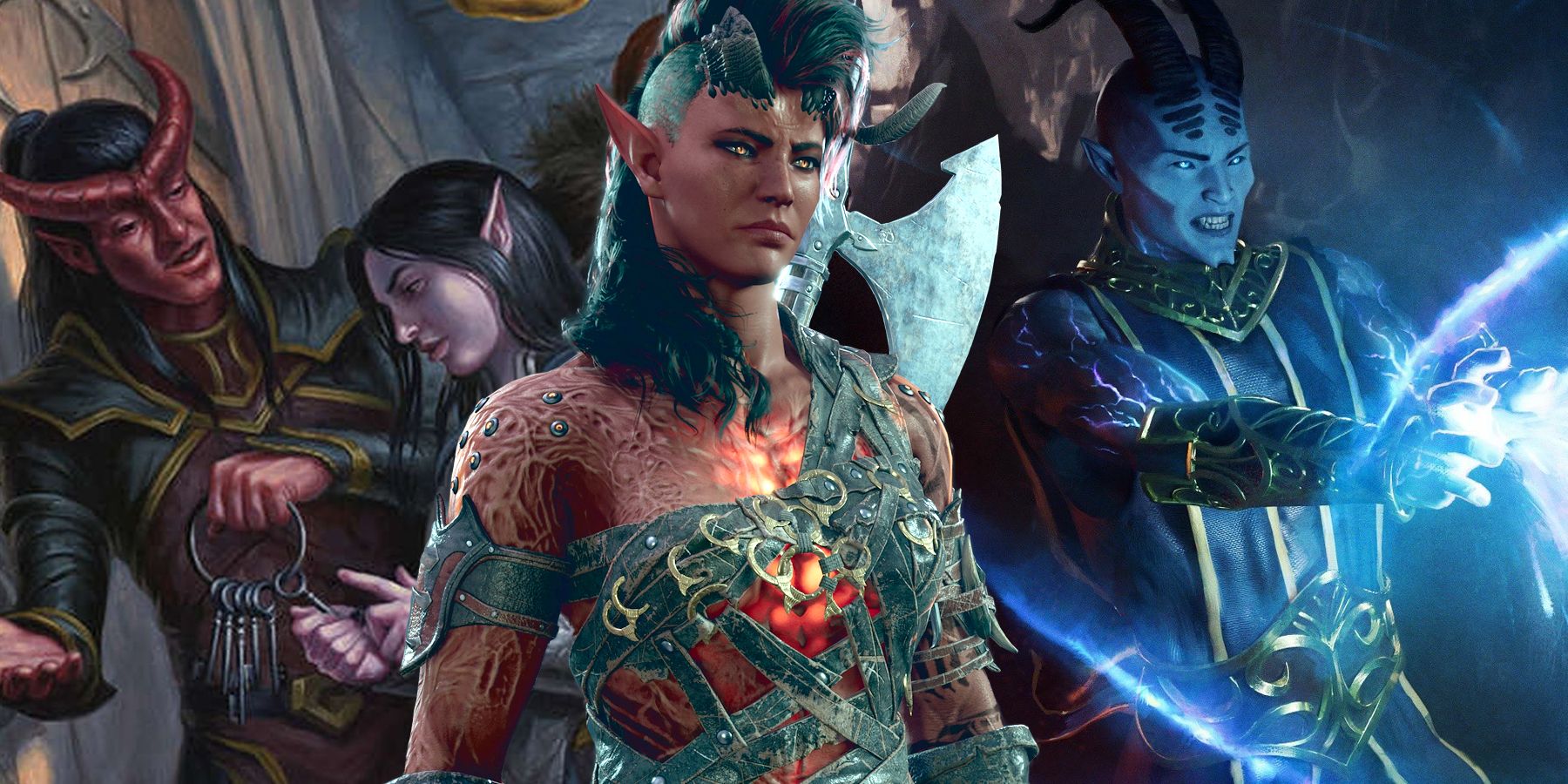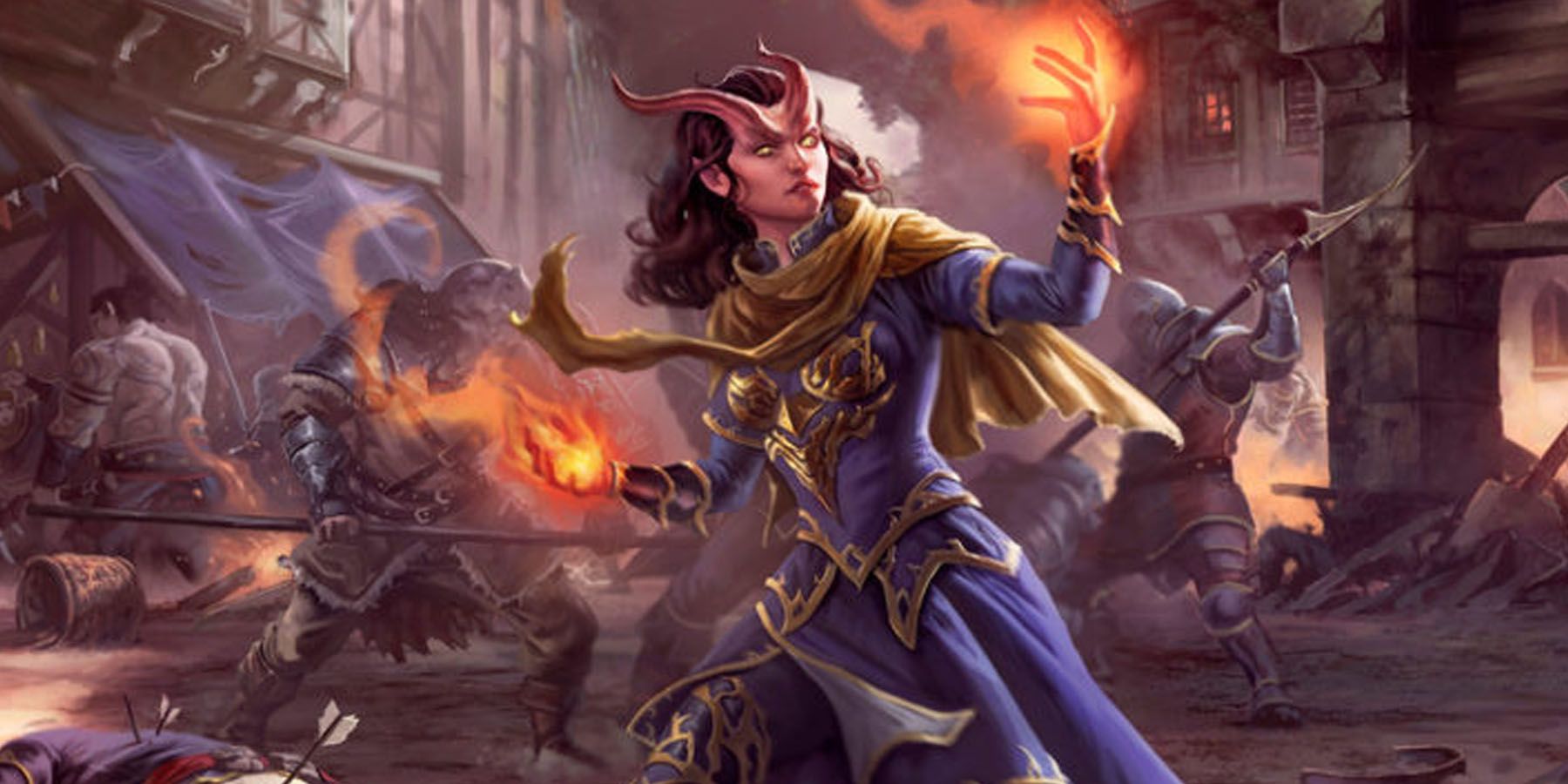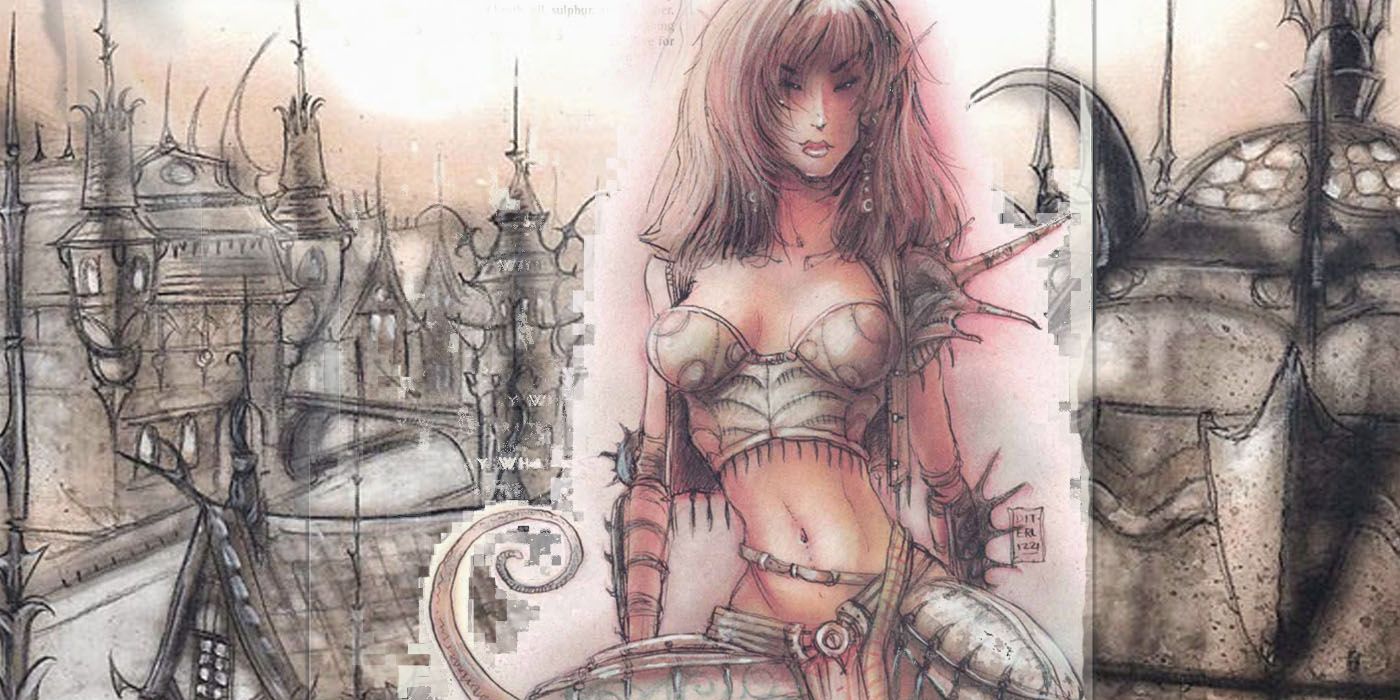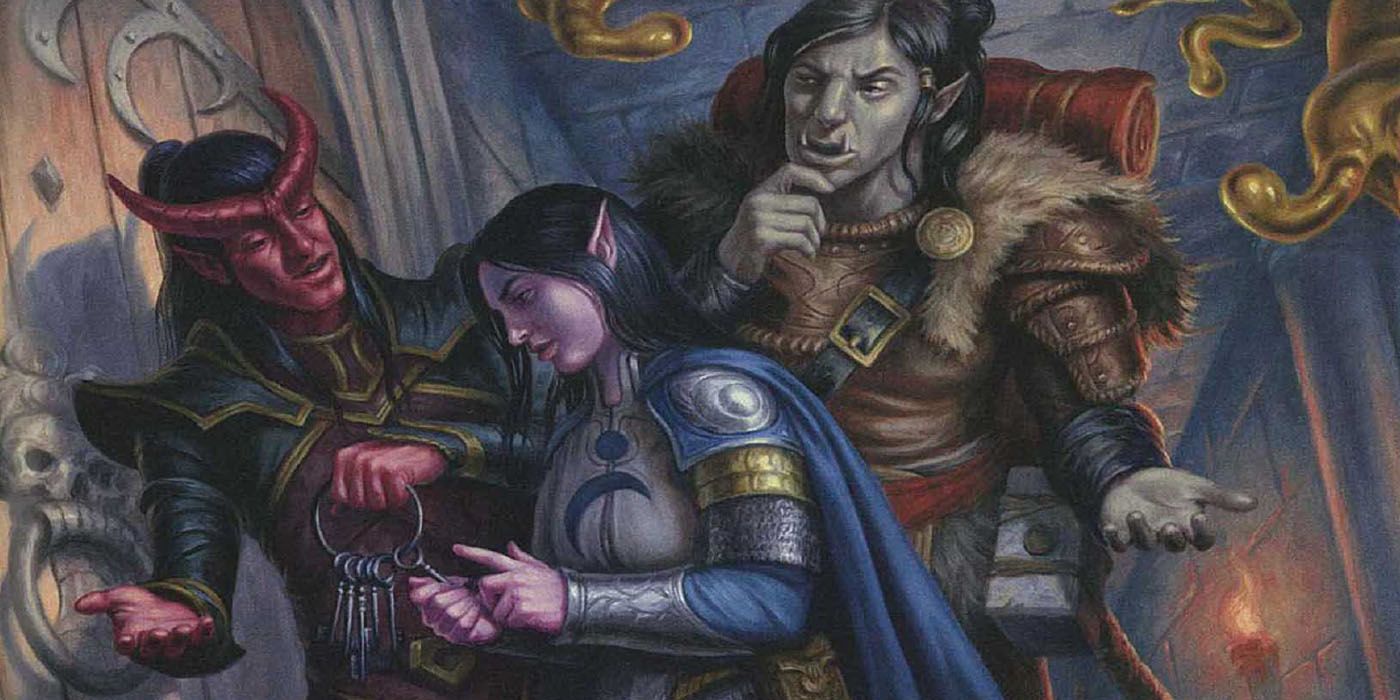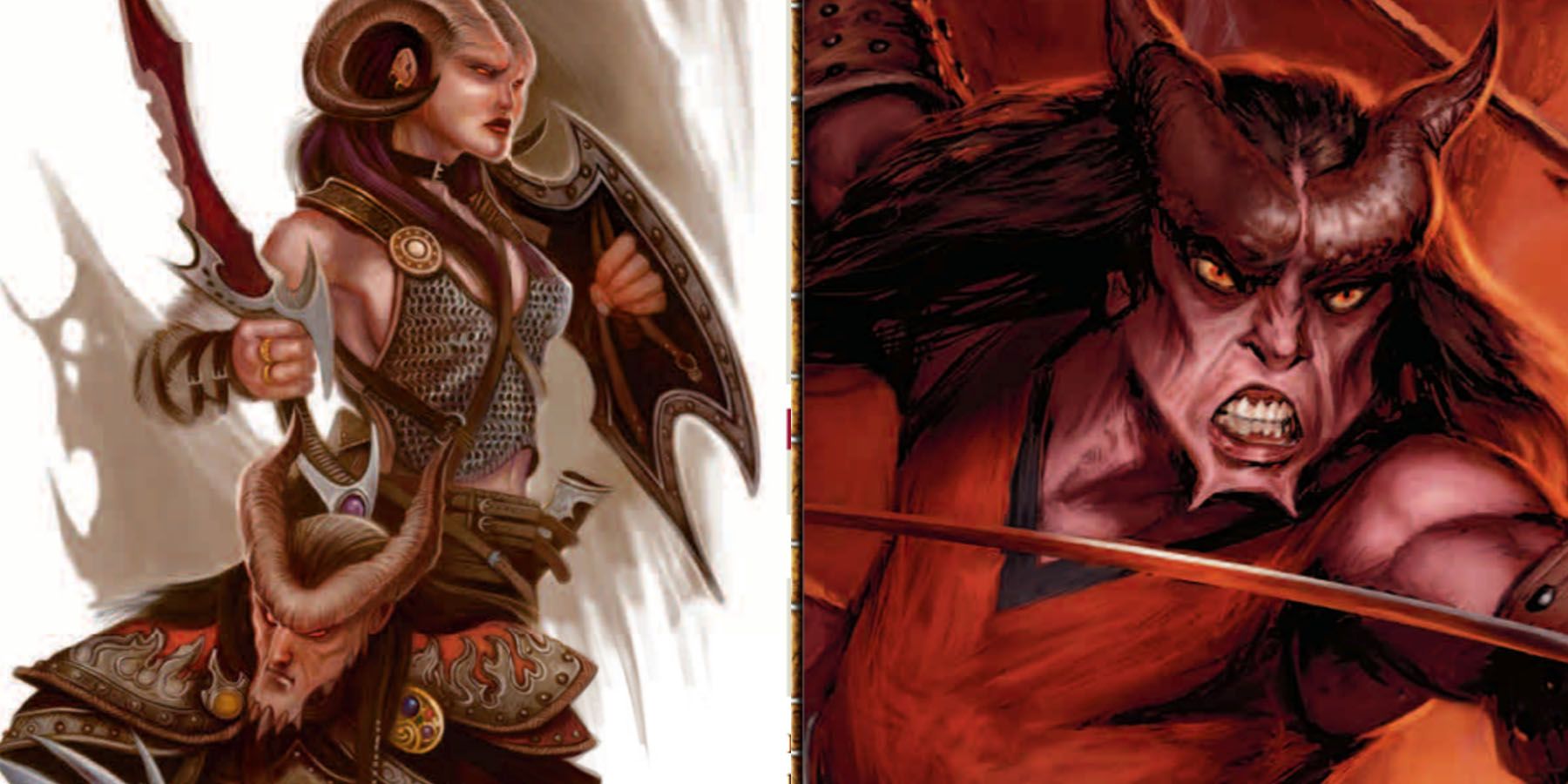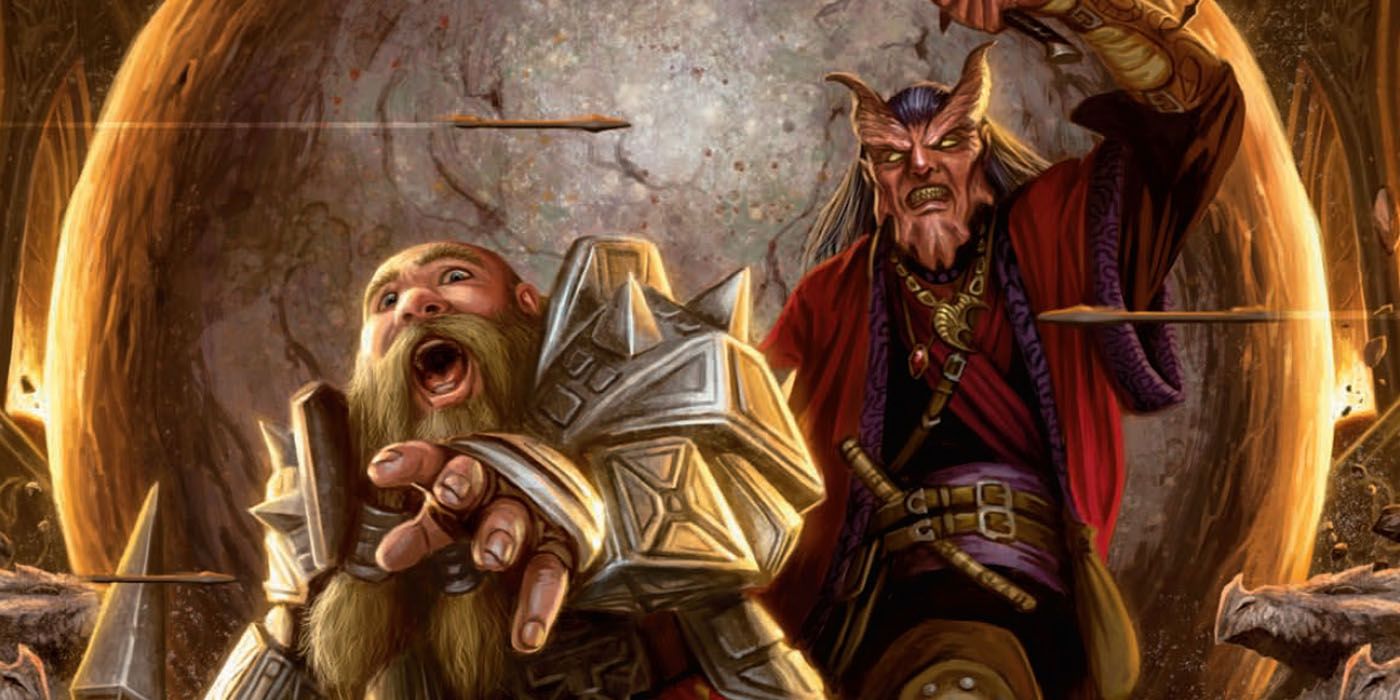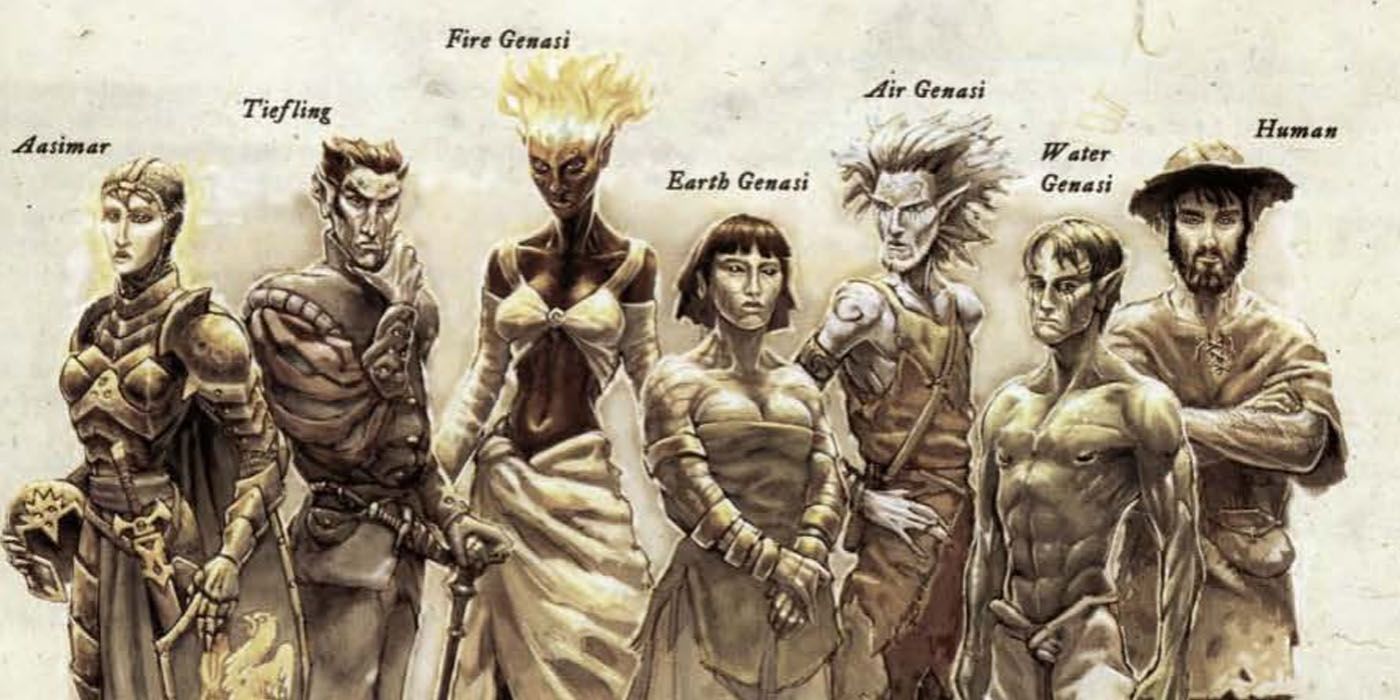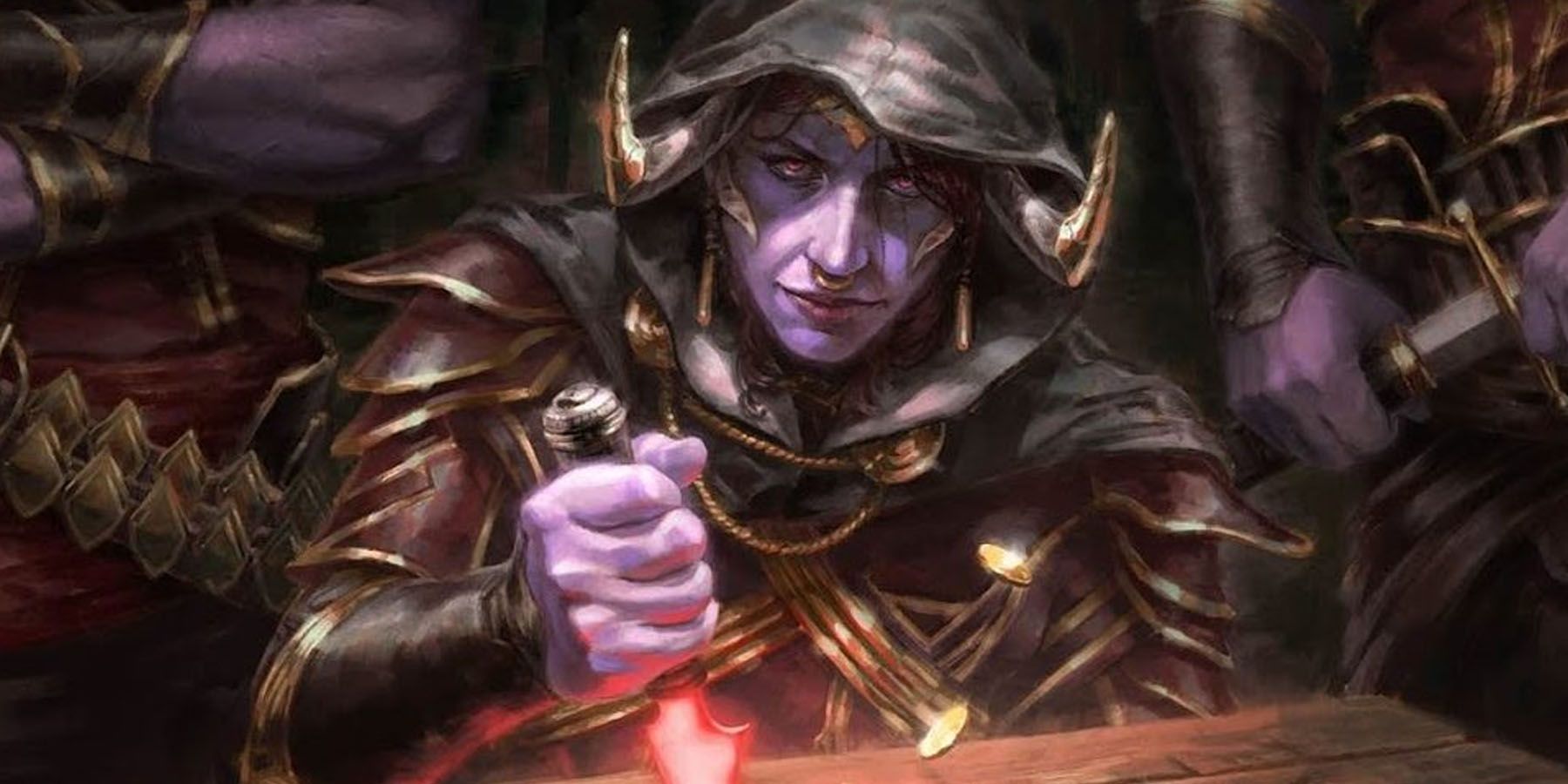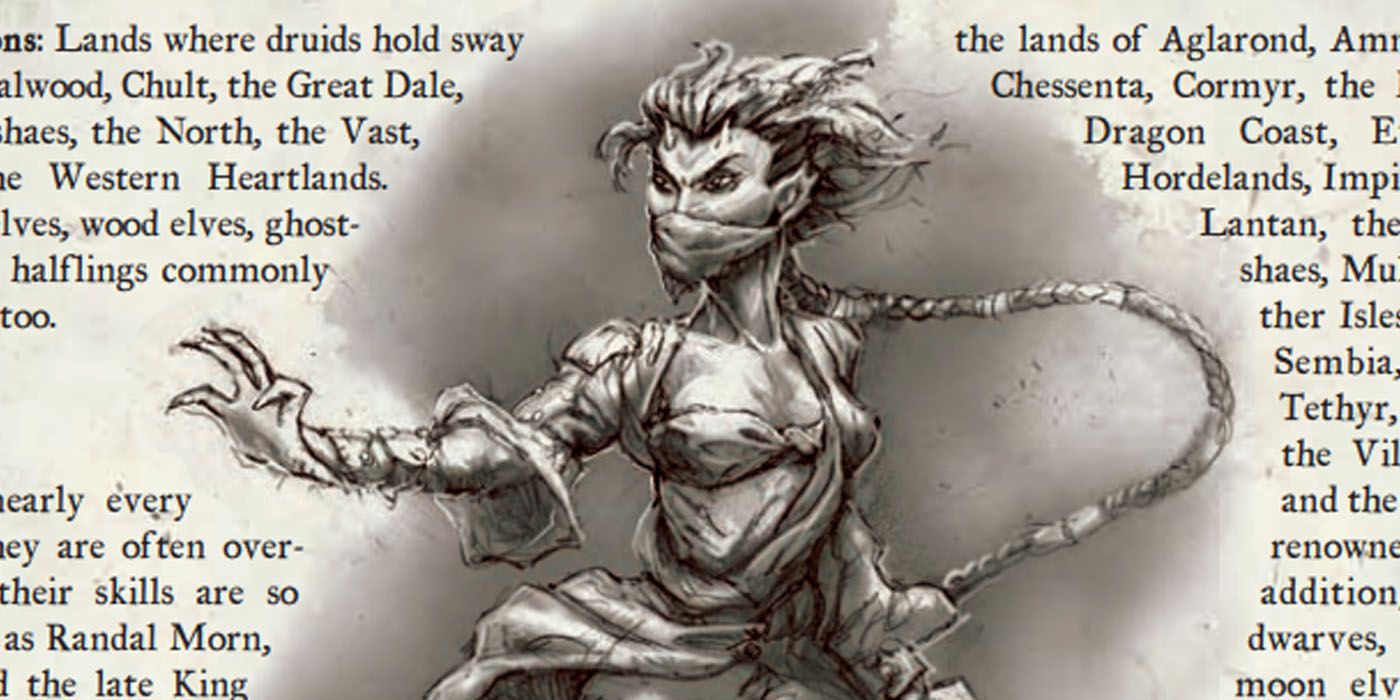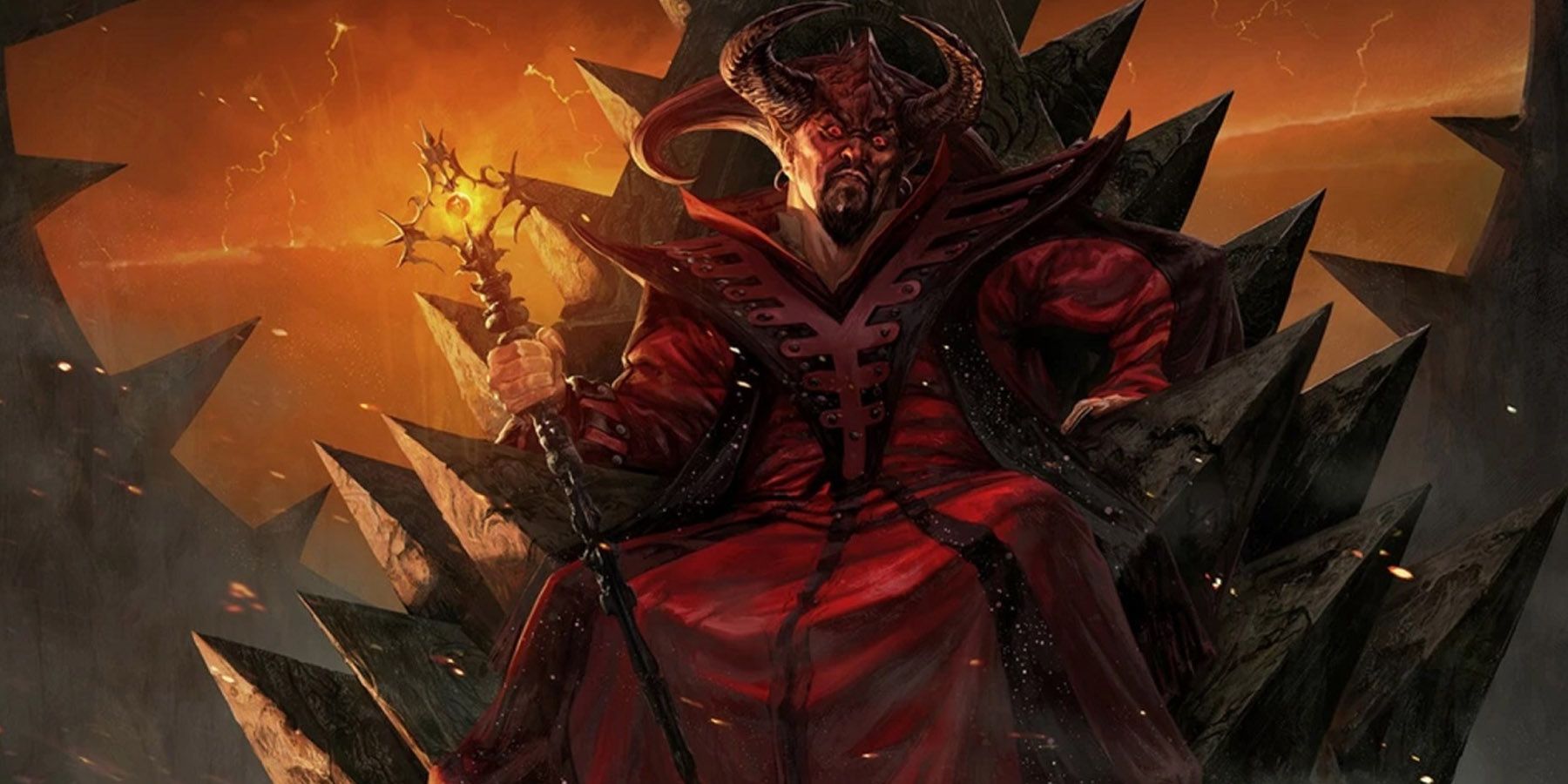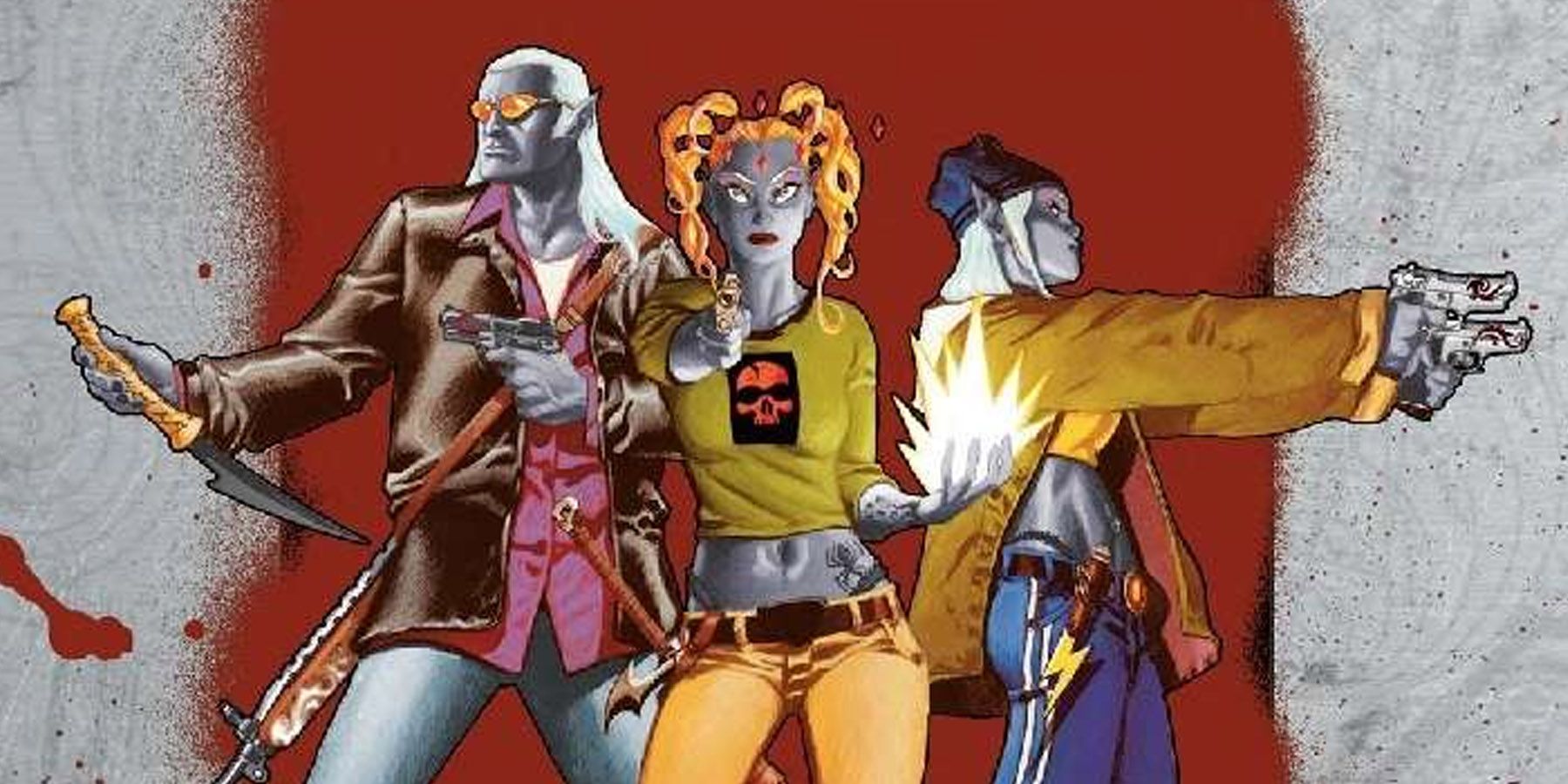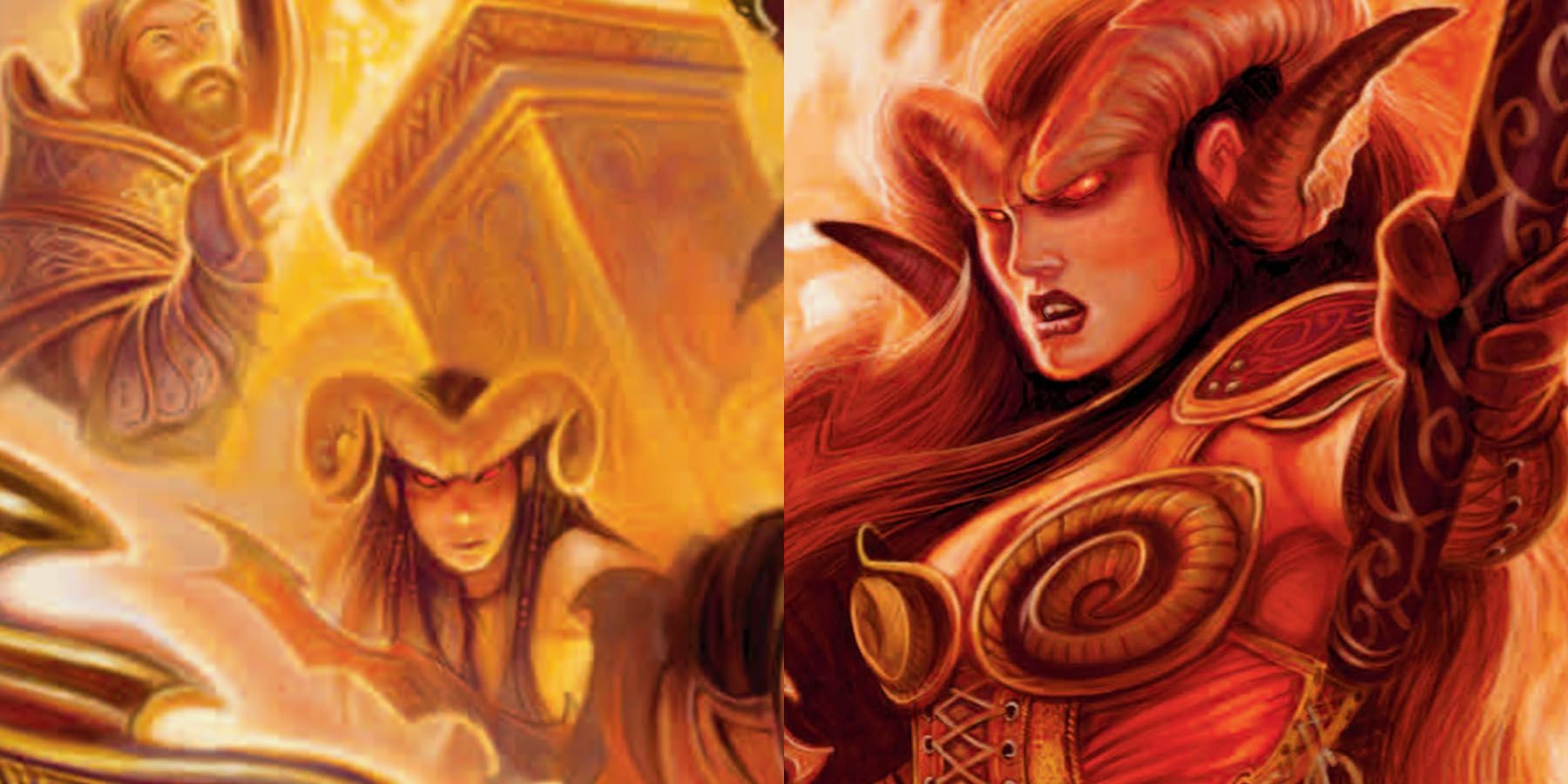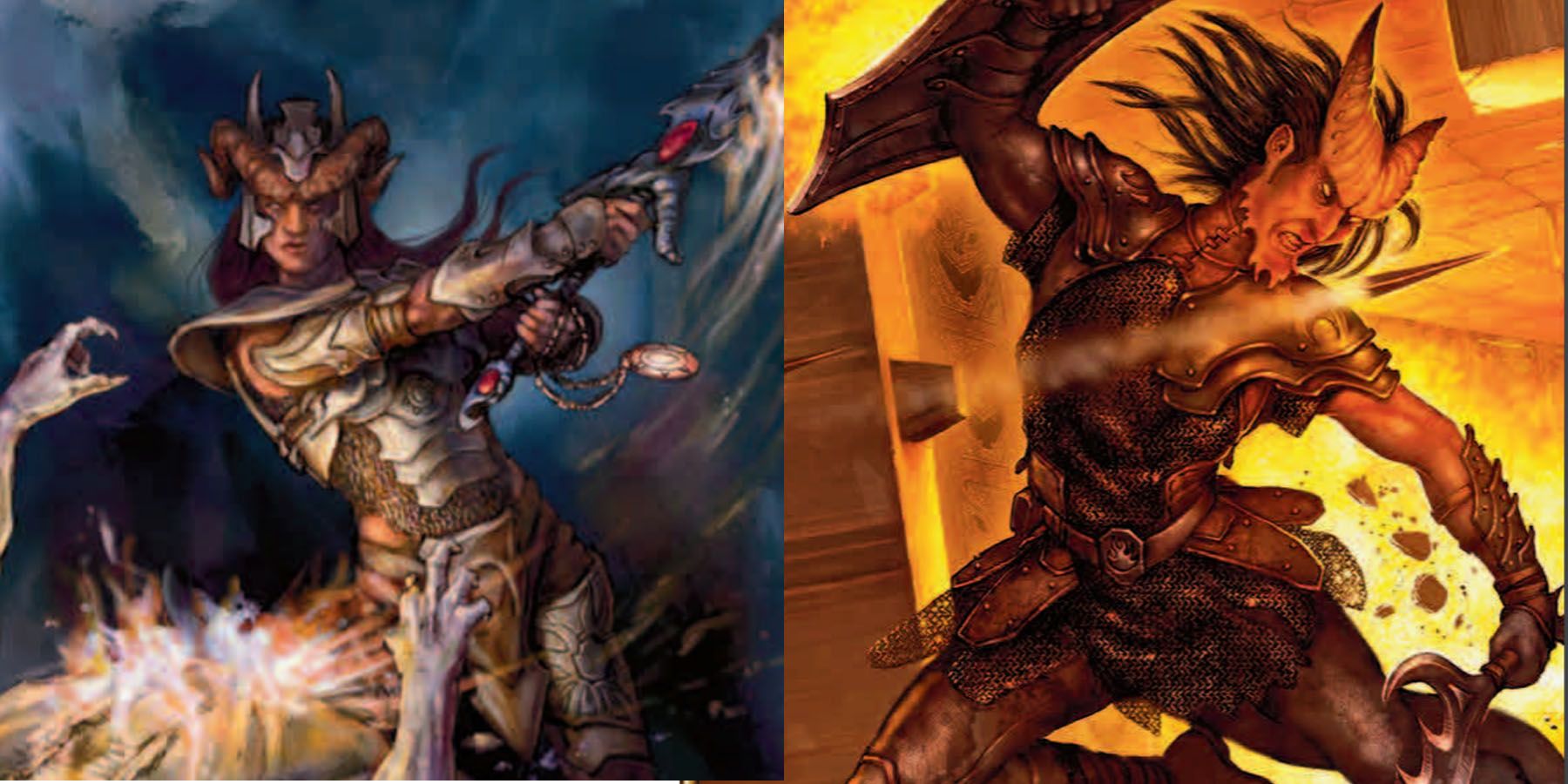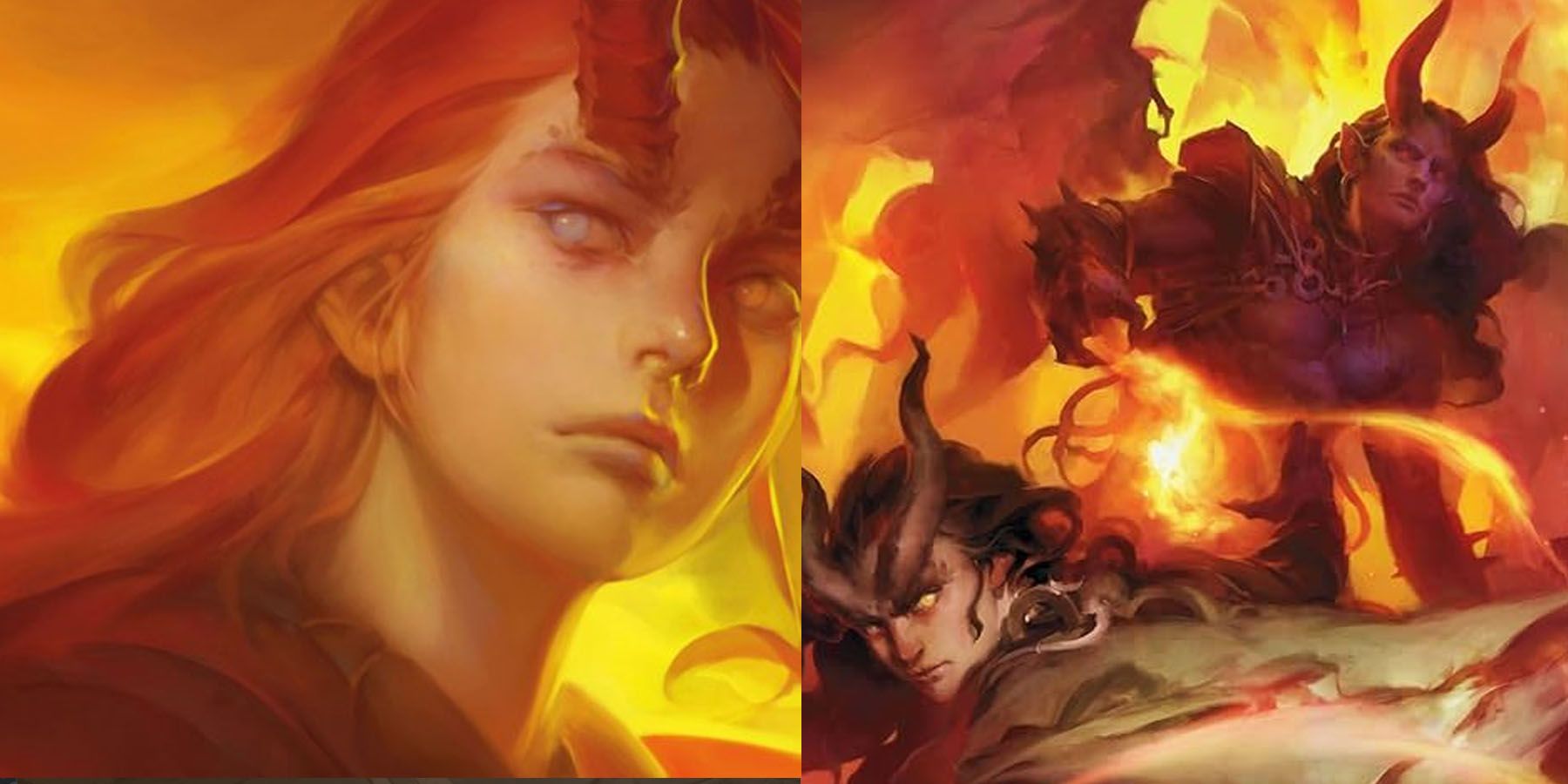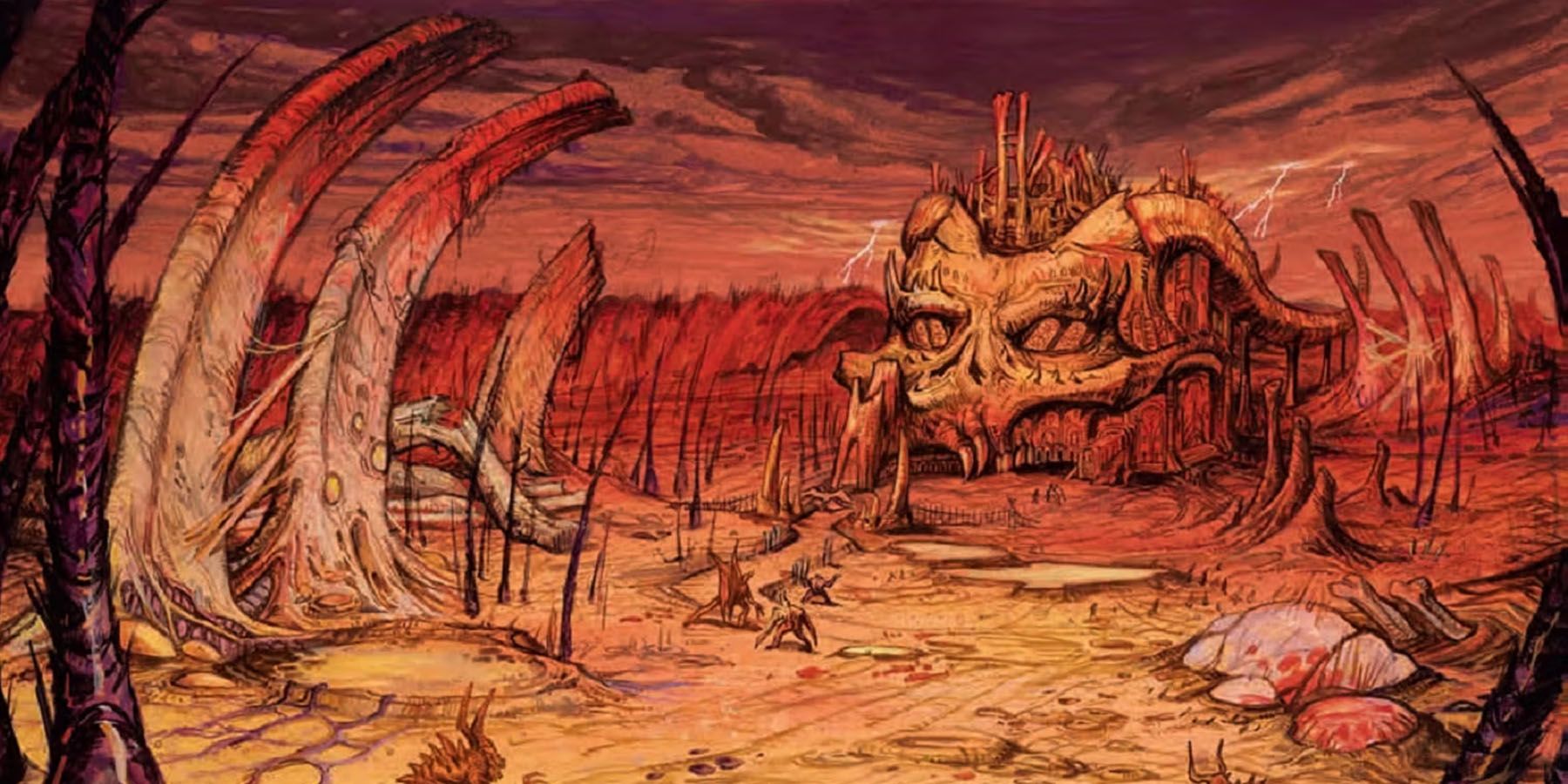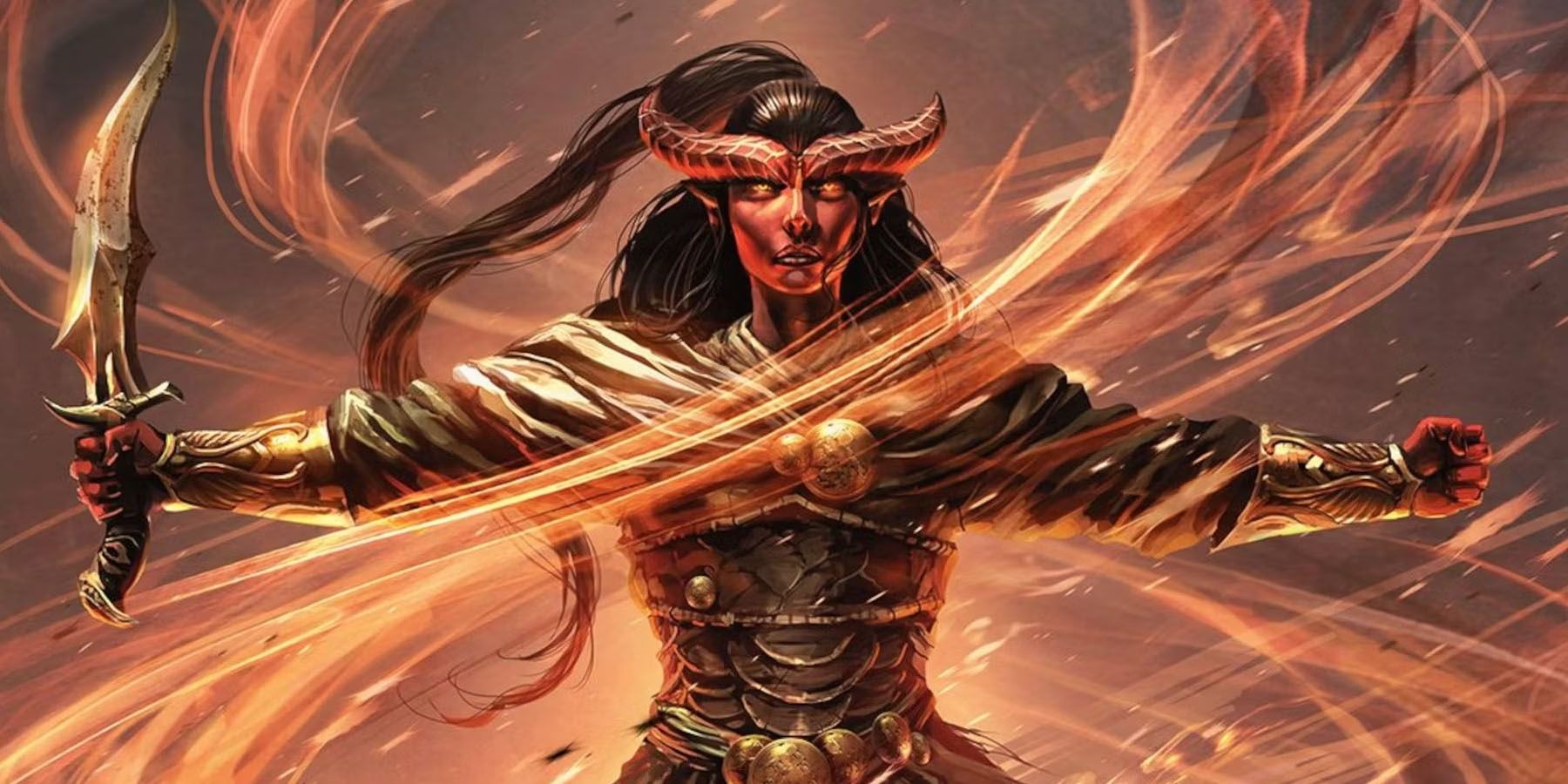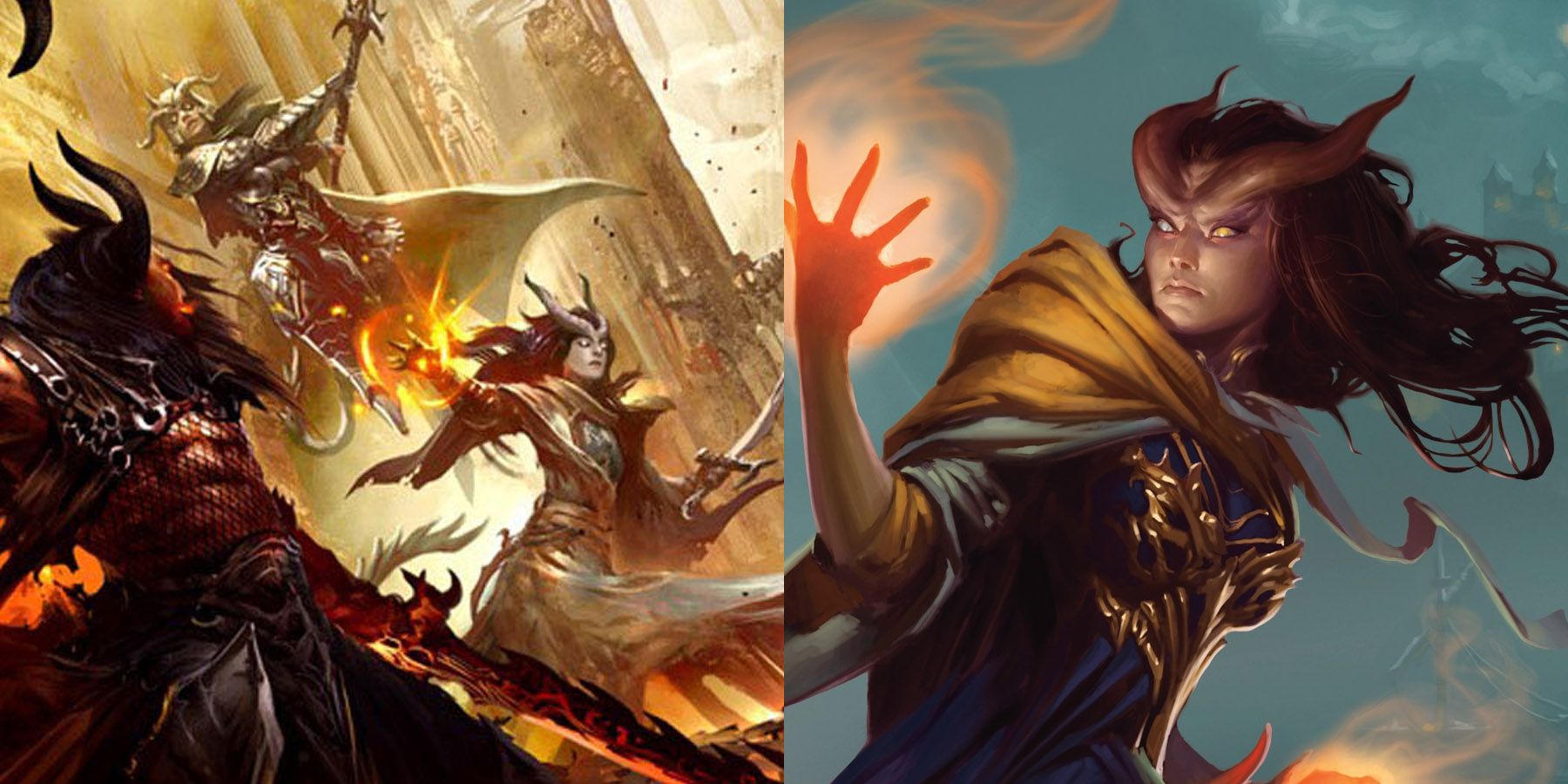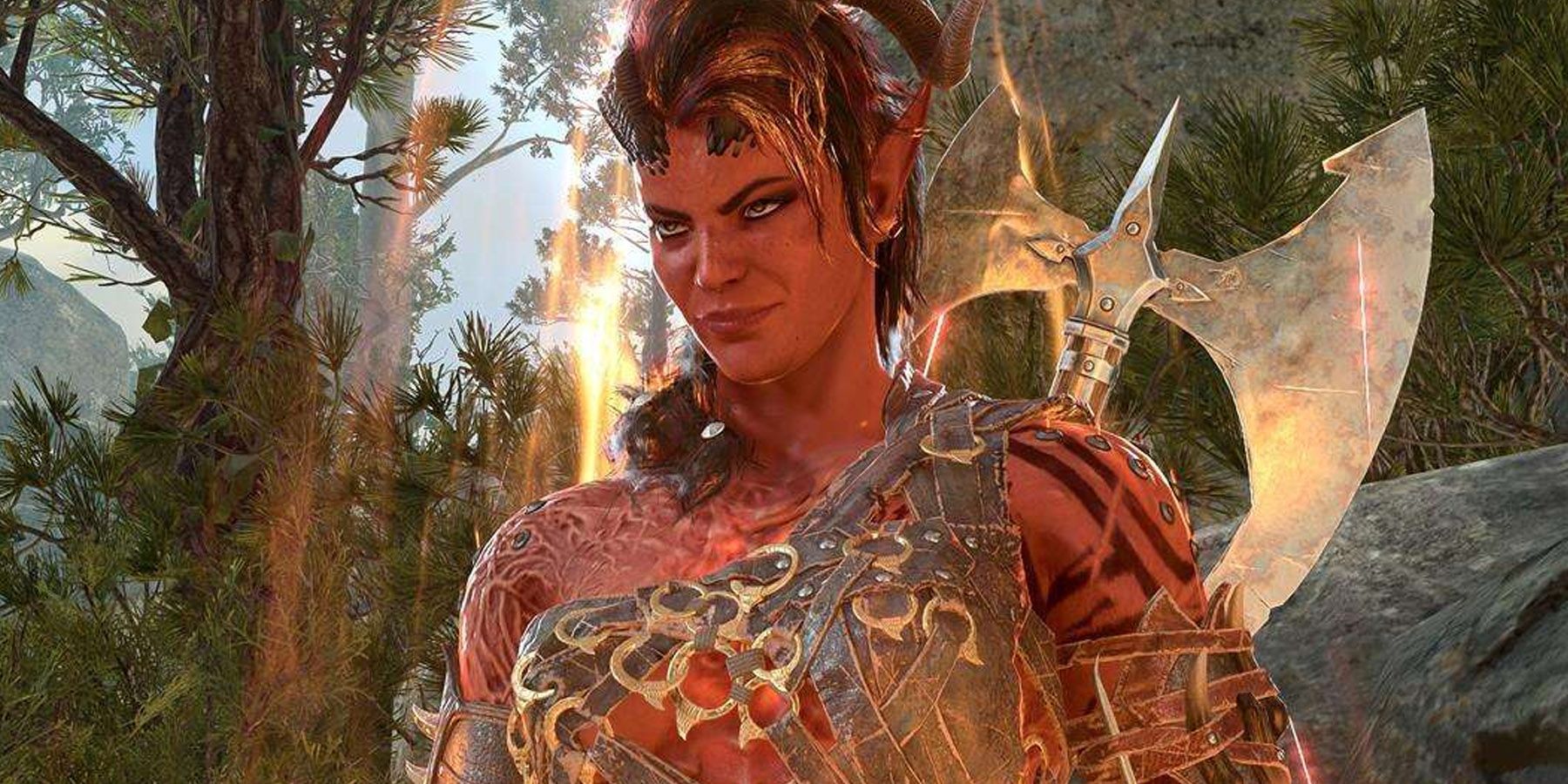Highlights
- Tieflings in D&D have a complex history, representing offspring from the lower planes and initially designed with random features.
- Tieflings can be descended from various beings, not just Asmodeus, allowing for unique bloodlines and variant origins in character creation.
- Tieflings' appearance and abilities have evolved over D&D editions, with changes expected in the upcoming One D&D release for more flexible character options.
It’s Tieflings in the Dungeons & Dragons multiverse that perhaps have the most strained relationship with their creators. Believed to have been spawns of demons and unwitting humans, Tieflings of D&D carry a particular air of edge that makes them quite the attractive playable ancestry for players. However, there seems to be more to Tieflings than their supposed infernal origins.
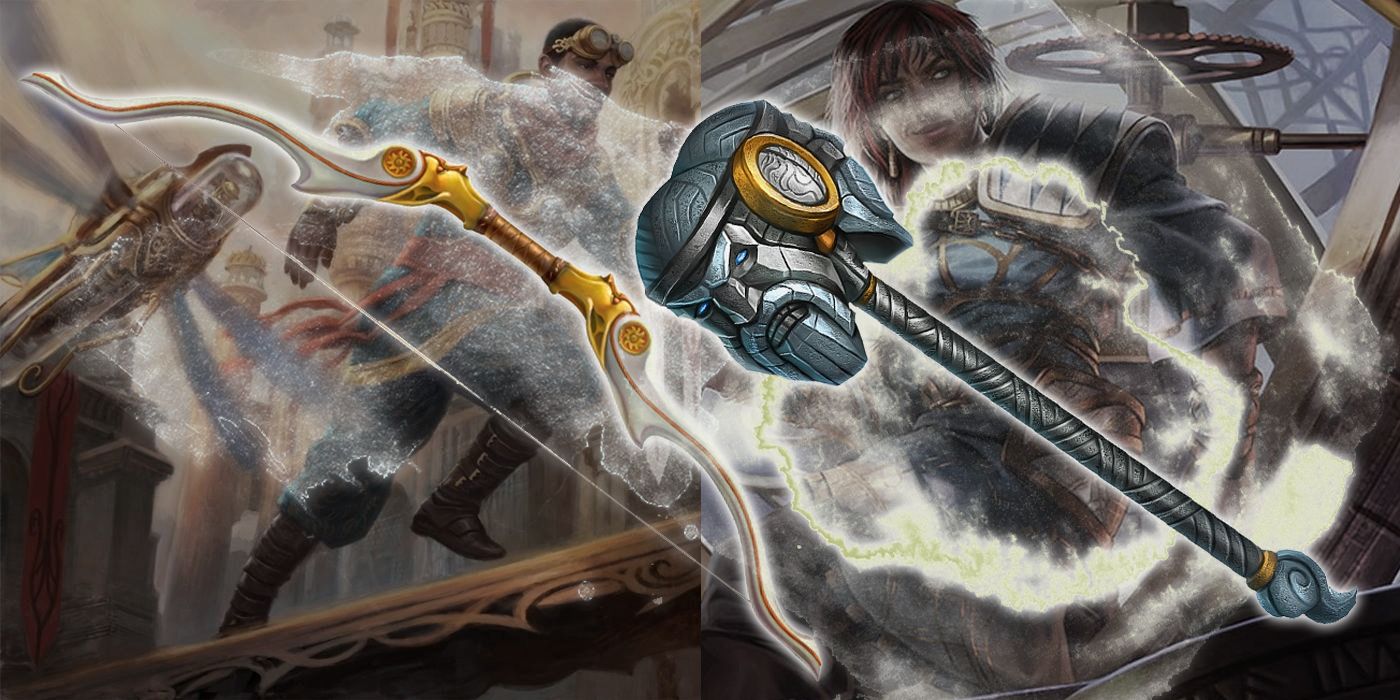
Dungeons & Dragons: The Best Weapons For Artificers & Where They're Often Found
Despite their magical affinities, Artificers in Dungeons & Dragons can make excellent use of weapons. Here are their best options.
Moreover, players who take the time to learn about the history of Tieflings in the context of the TTRPG can use this information to make more fleshed-out characters outside a Tiefling’s typical depictions. Just what else should players know about Tieflings in the acclaimed TTRPG?
Updated March 10, 2024 by Rhenn Taguiam: With the upcoming release of One D&D gearing up for a more seamless transition between tabletop and virtual tabletop experiences, fans of Dungeons & Dragons may be able to finally enjoy D&D with their friends online without complicated setups. Coming alongside a more compact VTT option is a slate of gameplay changes that aim for a more consistent D&D experience, with Races like the Tiefling encountering changes to their overall offerings that can make them a more enjoyable ancestry to play.
Before players take a deep dive into their One D&D offerings, they may want to know more about what the Tiefling has offered before, including variant types of Tieflings on top of their bloodlines, as well as their upcoming changes.
1 The Infernal Etymology
The Name Represented Someone From Below
It seems that Tieflings, design-wise, were meant to somehow represent creatures from the lower planes. It’s said that game designer Wolfgang Baur combined the German word “tief” which meant “deep, low” with the suffix -ling that pertained to “offspring.” As such, when combined, Tiefling could translate to “offspring from the lower flames.” It’s also said that the term may have come from “Teufel,” which is the German for “devil.”
The rather complex terminology was essential at the time, considering that D&D back in the 90s was against terms such as “devils” and “demons.” This is due in part to the negative attention the game has received with its depiction of devils and demons, suggestive art, and evil-aligned character conventions.
2 Originally Introduced In Planescape, 2E
Simply Known As One With Otherworldly Heritage
While Tieflings are popularly known as a playable race in modern D&D, they were originally introduced as creatures in Advanced Dungeons & Dragons 2E, particularly in the Planescape Campaign Setting. Unlike other settings, Planescape emphasizes the planes of existence in the Dungeons & Dragons cosmology. In the D&D multiverse, there’s the Prime Material Plane where the game’s settings exist, outside it are Inner Planes that correspond to the multiverse’s elemental building blocks, while the Outer Planes are associated with key alignments.
In the Planescape setting, creatures can travel in between planes through astral conduits, vortices, and portals. Tieflings, in particular, are described as humans dwelling within the planes with some “otherworldly heritage,” implied to be evil beings such as demons, devils, or fiends. Unlike half-fiends, however, Tieflings are far below the family tree, hence their human-like appearance.
3 Appearance Initially Had A Lot Of Random Elements
Randomized Appearance Reflected Otherworldly Origins
Whereas Tieflings in modern editions often have similar characteristics from their infernal ancestry, the original appearance of Tieflings in 2E actually had a more randomized nature. Initially, the “Planescape Monstrous Compendium Appendix” describes all Tieflings as having one feature that reveals their heritage, such as the popular horns. Meanwhile, “The Planeswalker’s Handbook” expands on this rule with a randomizer table that can provide DMs with other features that Tiefling could have, such as red eyes, goat legs, and even supernatural abilities.
This is quite interesting, as the beginning of D&D 3E provided Tieflings with a more humanoid appearance with the occasional horns, but still looking human like the Aasimar. It was the Dungeon Magazine’s depiction of the Tiefling - that with horns for eyebrows and pink sin - that may have contributed to their appearances in other editions.
4 Have Had Various Creation Methods
May Be Created Through Reproduction, Magic
Tieflings from Bael Turath have a strong connection with Asmodeus and the Nine Hells, as such, they can reproduce sexually and produce Tieflings as their offspring. However, various other creative methods for Tieflings exist that players can use as references for their characters.
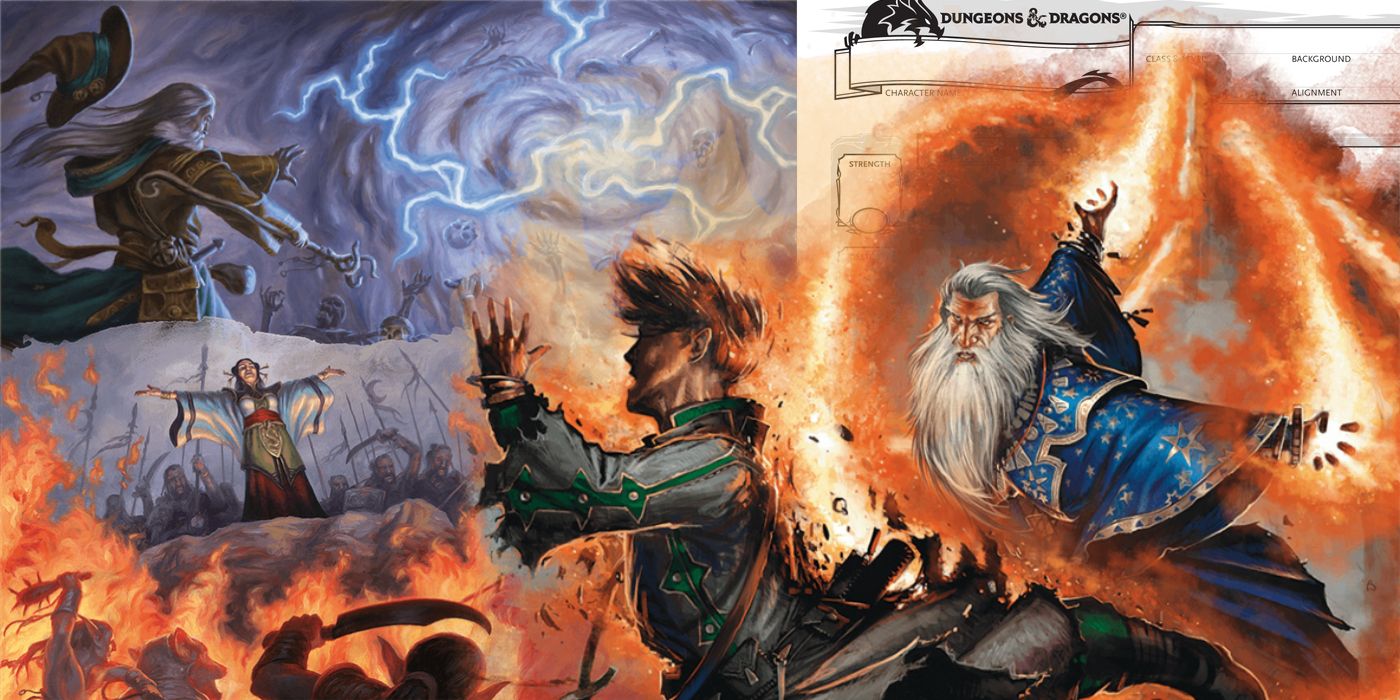
Dungeons & Dragons: 10 Best Evocation Spells in 5e
Any spellcaster would like to wield these powerful pieces of magic.
For instance, some humans can transform themselves into Tieflings using incredibly powerful dark magic. Likewise, some extraplanar beings can assume a humanoid form and interbreed with other humanoids, creating a half-fiend or a cambion, which then creates a Tiefling after creating offspring. Interestingly enough, Tieflings procreating far down the bloodline with another race have a chance of their offspring getting the race of the other parent. However, since being a Tiefling is in their blood, this can “reactivate” and spawn yet another Tiefling in subsequent generations.
5 Non-Human Tieflings Did Exist
Tieflings May Exist For Dwarves, Elves, And Orcs
While Humans are the most popular “templates” for Tieflings in most of their appearances, Tieflings do exist where the humanoid “half” has come from other more prominent races. One such popular example would be the Fey’ri, a result of interbreeding between the Sun Elves and the demonic Tanar’ri to strengthen their bloodline. Another example of such a variant would be the Tanarukk, a breed of Orcs who have interbred with evil-aligned entities, such as the Tanar’ri.
Moreover, other Tiefling variants of similar nature exist. Dwarves who have interbred with demons and other fiends are called the Maeluth, while the Goblin variant is considered a Worghest. Even Halflings, Trolls, and Minotaurs aren’t safe from having Tiefling variants, with theirs being called Wisplings, Mur-Zhagul, and Baphitaur, respectively.
6 Counter To The Aasimar
The Infernal Counter To The Celestial Aasimar
Another interesting tidbit about the Tiefling is that, given their nature as initially evil-aligned creatures, they do have a good-aligned counterpart in the form of the Aasimar. Also plane-touched creatures, it’s heavily hinted that the Aasimar have divine origins. Compared to Tieflings that often demonstrate physical characteristics found with fiends and demons, Aasimar are extremely physically appealing, as well as possessing golden eyes and silvery hair that often give away their divine origins.
In 2E, Aasimar are said to have descended from either the elegant Eladrin of Arborea, the Guardinals of Elysium, or the neutral Rilmani of the Outlands. As such, Aasimar often take the physical appearances of their ancestors, resulting in some Aasimar may or may not having wings, silver skin, or even calm animals.
7 Not All Are From The Nine Hells
Some Tieflings Are From Beyond The Realms
Despite the Tieflings having origins from the Nine Hells, not all Tieflings have descendants from Asmodeus. Players who want to explore other planes of existence can encounter planetouched Tieflings or humans who have descended from beings of the Lower Planes. In D&D lore, an event called the Spellplague transformed Tieflings outside regular reality into variants without the blood of Asmodeus.
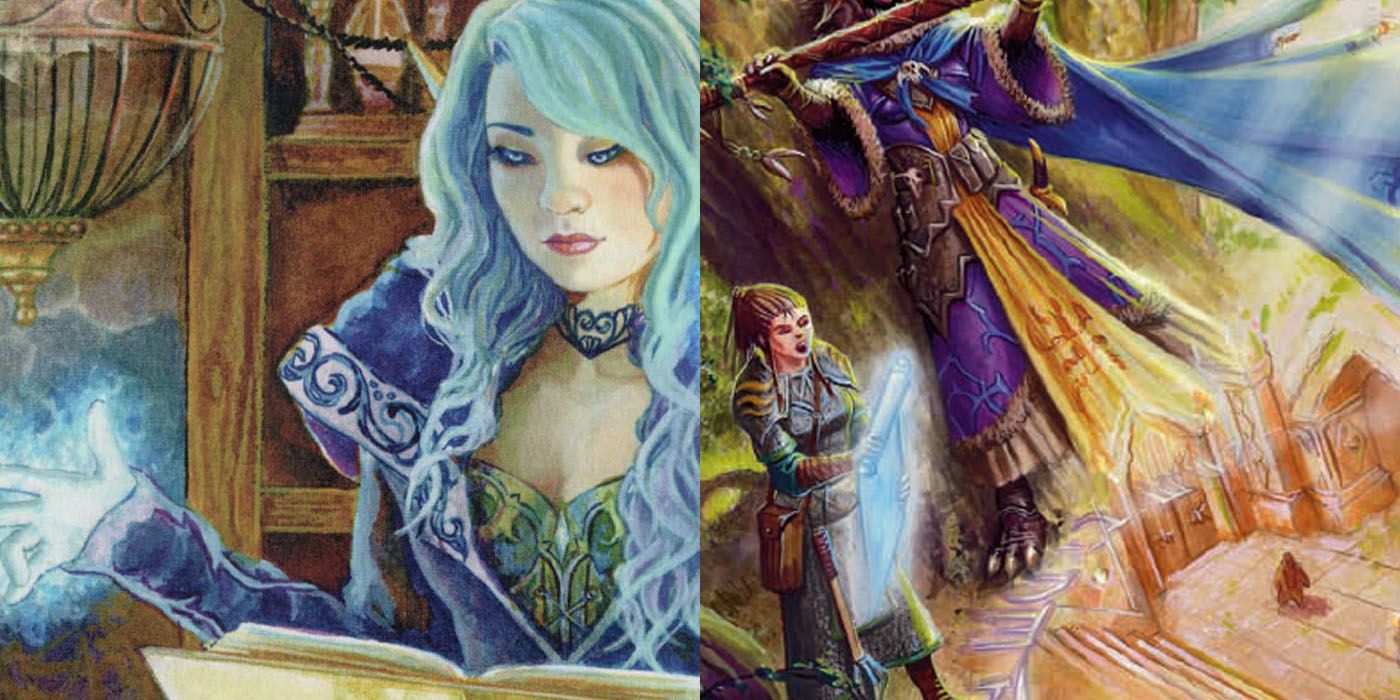
Dungeons & Dragons: 15 Best Divination Spells In 5e
In Dungeons & Dragons, Divination spells can provide massive advantages for the whole party. Here are some of the best in the school.
As such, these kinds of Tieflings may have still descended from beings that are categorically evil but not necessarily of Asmodeus’ ilk. These include rakshasas, evil deities, and even fiends. Tieflings who come from these kinds of bloodlines don’t necessarily have the traits of usual Tieflings, which is why some of them may lack goat-like legs and instead have cat eyes and furry skin.
8 Enter The Level Adjustment System
Initially Monsters Before Player Characters
The Tiefling got a place in D&D 3rd Edition first as a creature within its “Monster Manual,” giving DMs stats to add Tieflings to their campaigns. It was only due to the release of the Forgotten Realms campaign setting that Tieflings were allowed as a playable race. However, this isn’t necessarily a “playable race” in the same way as they appeared in D&D 4E. Rather, this came with the Level Adjustment system that D&D 3E implemented to allow players to use more powerful races in a balanced manner.
This Level Adjustment System originally came as a result of fan clamor for fans to be allowed to play Drizzt Do’Urden, a Drow from a hit novel series set in the Forgotten Realms. Under the Level Adjustment System, certain powerful races have a “Level Adjustment” that puts them a couple of levels behind characters with the same amount of experience for the sake of balance. Thanks to this system, more powerful Tieflings became playable using D&D 3E.
9 Manipulated For Asmodeus's Godly Pursuit
Once A Tool For Asmodeus' Godhood
The backstory and history of Tieflings were further developed across Brimstone Angels, specifically in the final book The Devil You Know where Asmodeus enacts a plan to achieve godhood. In it, a group of warlocks known as the Toril Thirteen created a ritual that cursed most Tiefling bloodlines into becoming that of the archdevil’s, practically making him a “God of Tieflings.”
Before Asmodeus’ ascension, Tieflings could filter their infernal blood and make it weaker through intermarriage. Since the spellplague, most Tieflings born in Toril had been of Asmodeus Lineage. However, the latter parts of the 15th Century saw the rebirth of the older bloodlines.
10 Modernized In Urban Arcana
Became A Part Of D&D's Urban Setting
Tieflings can also make an appearance in the Urban Arcana, a D&D campaign setting that transfers the fantasy and magic of the TTRPG into a modern world close to that of Earth. In it, a phenomenon known as the Shadow has started transferring fantastical creatures to the modern world, with the Gift of Lethe masking memories of their previous home.
Due to consensus reality, the “implausibility” of the existence of supernatural creatures has made ordinary humans treat non-humans as fellow mundanes. In the case of the Tiefling, many of them retain their horns and tails. However, for humans who can’t perceive the Shadow, Tieflings end up looking like regular humans with a penchant for cynicism.
11 Formally A Core Race Only In 4E
Became An Official Player's Handbook Race In 2008
It was around the release of D&D 4th Edition that Tieflings got a chance to shine in the spotlight as a core playable race. This is also the official debut of the iconic Tiefling appearance - that of humanoids with pink or red skin, horns on eyebrows that curve around the head, long tails, and a menacing appearance all over.
However, it’s also around D&D 4E that the Tieflings finally got their racial history. According to the lore, Tieflings descended from humans in the fallen kingdom of Bael Turath. Unfortunately for them, the kingdom’s noble houses made pacts with infernal powers to improve their bloodline, not knowing that this meant taking on the appearance of demons from the Nine Hells.
12 Expanded In 5E
Offered More History, Variants In 5e
While D&D 4E made Tieflings part of the D&D spotlight by being a core playable race, it’s within D&D 5th Edition where Tieflings had a more expanded history and playability options that gave players a lot of flexibility with regards to their characters. Tieflings in D&D 5E retain much of their appearance and history from D&D 4E, although this time the new edition describes Tieflings as a rather uncommon race.
Interestingly enough, D&D 5E also offers unique options for Tieflings. For instance, Variant Tieflings from “The Sword Coast Adventurer’s Guide” are Tieflings that may have been planetouched but aren’t necessarily associated with Asmodeus, the lord of demons.
13 The Variant Origins Of Today’s Tiefling
Tieflings Can Have Special Variations
While the "traditional look" of a Tiefling in D&D 5e materials often gave them horns and prehensile tails, the rulebooks also allowed players to create Variant Tieflings. These special variations of Tiefling represented the fact that not all Tieflings have come from Asmodeus, and as such their special characteristics may have been inherited from another aspect of their origin beyond the Nine Hells.

Dungeons & Dragons: 6 Tips For Making Villains More Compelling
For DMs brand-new to the D&D experience, or for veterans who just need a spark in their campaign, these tips can help make any D&D villain compelling.
Similar to how Warlocks can receive gifts from their Patrons, Variant Tieflings may possess properties other Tieflings don't have. Should Dungeon Masters allow it, Variant Tieflings may instead get Wings or even a modified appearance in the form of forked tongues, fangs, small horns, scaly skin, cloven hooves, and the like. They may even get other Tiefling traits such as Feral (replaces Ability Score Increase for +2 DEX and +1 INT), Devil's Tongue (replaces Infernal Legacy with Vicious Mockery, Charm Person, Enthrall), and Hellfire (replaces Hellish Rebuke with Burning Hands).
14 The Different Bloodlines Of D&D 5e’s Tiefling
Asmodeus Isn't The Only Progenitor Of Tieflings
While Asmodeus remains iconic in D&D for this representation of Lawful Evil deities and being the "technical" father of Tieflings, his blood isn't the only one coursing in a Tiefling's veins. Should Dungeon Masters allow it, other sources provide examples of other Tiefling Bloodlines that players can choose for their character. In campaigns where the Nine Hells has an active participation, Tiefling Bloodlines can come into play with their different histories and specialties.
For instance, certain bloodlines are tied to corruption and sickness (Baalzebul), tapping into secrets (Dispater), charming others (Fierna), thievery and heists (Glasya), cold and death (Levistus), and even magic itself (Mephistopheles). Dungeon Masters who want to integrate Tiefling politics into their campaigns could include Tiefling Bloodlines into their stories, adding flair to their games.
15 The Tiefling Switch-Up For Upcoming One D&D
Expected Changes To Tieflings In The New Handbook
The upcoming 2024 release of the updated Player's Handbook is poised to make significant changes to the base mechanics of D&D 5e, especially when it comes to character creation. General changes include removing Ability Score Increases from Races and instead relegating them into Backgrounds, as well as Lineages replacing Subraces.
The Tiefling Races to receive changes in this regard, making them more flexible for character creation. All Tieflings get Darkvision with Thaumaturgy, with Lineages now split into Abyssal, Chthonic, and Infernal. Each of them is themed around poisons (Abyssal), ice (Chthonic), and fire (Infernal).
16 Popularized In Brimstone Angels
Farideh Became The Representative Of Tieflings
While various D&D sourcebooks and media have elaborated on the Tieflings and their evolving culture, none have perhaps done a better job in their characterization than Brimstone Angels. Written by Erin Evans at the height of D&D 4th Edition, the story tells the tale of twins Farideh and Havilar and their adventures in the Forgotten Realms.
In a world where being a Tiefling is looked down upon, Farideh and Haivlar show that no race should determine one’s standing in society. As Farideh eventually becomes a Warlock, she becomes somewhat of a signature character for the Class. Their names and interactions in the series are also used for some Dragonborn, Tiefling, and Warlock flavor texts in future books.
17 Popular Tieflings In Games
Other Tieflings Became Popular In Games
Since their appearance in D&D media, Tieflings have become one of the most popular races in both player campaigns and official material. This popularity extends in D&D games, where some Tieflings have established themselves as fan favorites due to their personalities and gameplay options. Here are some examples:
- Karlach, Baldur’s Gate 3: Despite her bubbly and over-eager nature, the Barbarian Karlach from Baldur’s Gate 3 wants to exact revenge on the Archdevil Zariel for forcing her to fight in the Blood War.
- Neeshka, Neverwinter Nights 2: Soft-spoken and fiercely loyal, Neeshka from Neverwinter Nights 2 is the best character for Rogue-type builds. Being abandoned as a child, Neeshka finds solace in the companionship of the player character and their friends.
- Annah, Planescape: Torment: Brash and sarcastic, Annah of Planescape: Torment becomes a Tiefling courtesy of her grandparents, one of whom was a fiend. Raised as a rogue, Annah makes for an efficient Fighter/Thief, and may even teach the player.
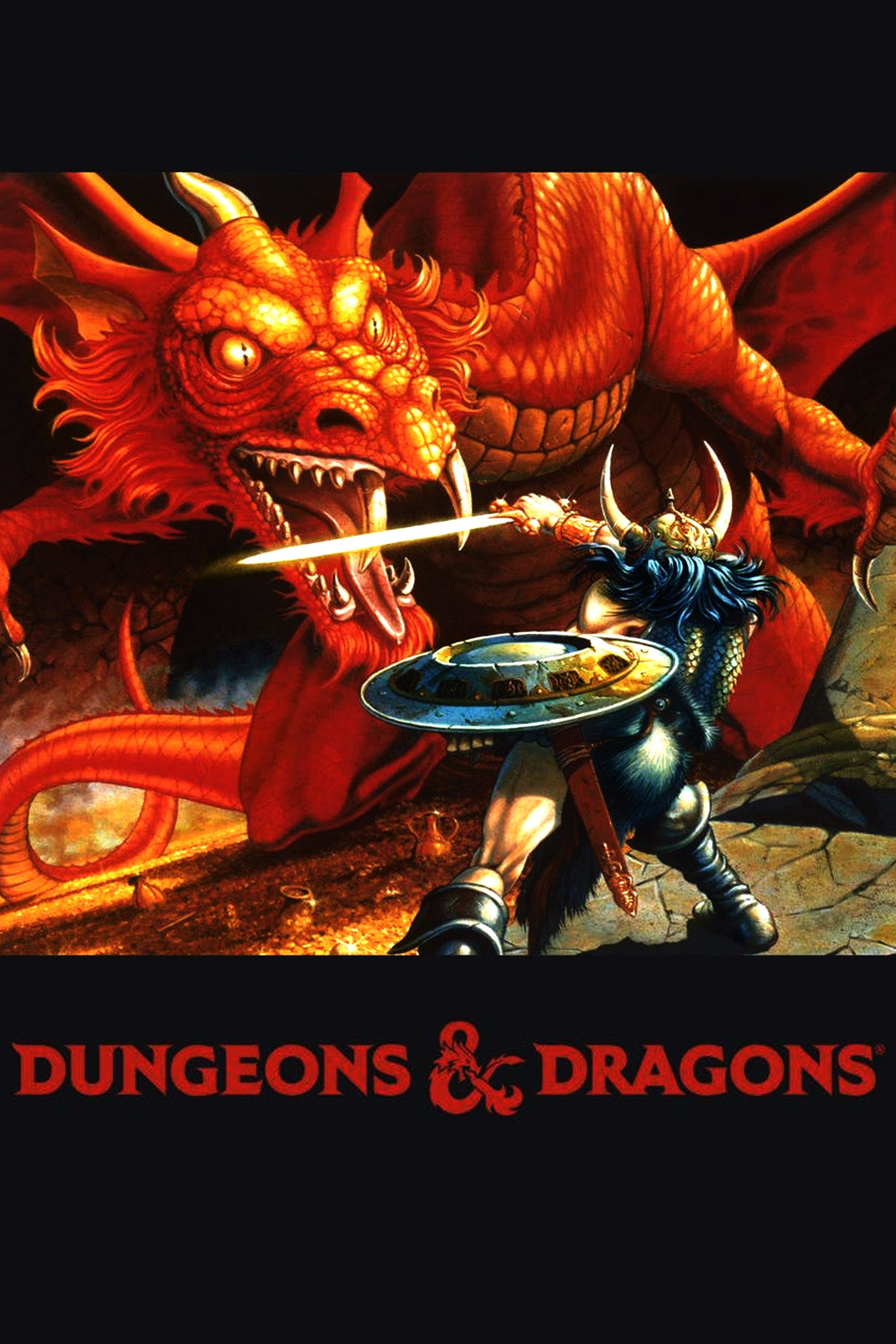
Dungeons and Dragons
- Original Release Date
- 1974-00-00
- Publisher
- Wizards of the Coast
- Designer
- E. Gary Gygax , Dave Arneson

